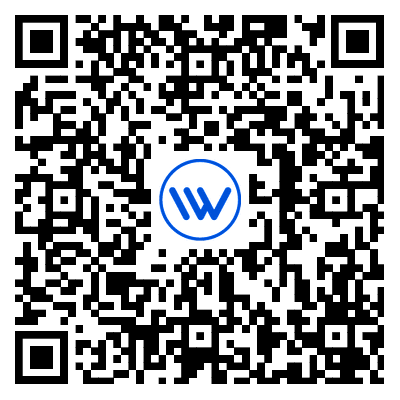O&M Practice | Lerwee Monitoring Helps Stable Operation of Medical Business
PART 01: Project Background
Against the backdrop of accelerated digital transformation in the healthcare industry, hospital core business systems such as HIS, EMR, PACS, etc. are increasingly reliant on databases. With the surge in business volume and the increase in operation and maintenance costs, a certain tertiary hospital has highlighted problems such as narrow coverage of the original database monitoring system and lagging fault response, and urgently needs an efficient and unified monitoring solution. LeWei, with its intelligent operation and maintenance platform, has built a comprehensive database integrated monitoring system for the hospital, successfully solving the operation and maintenance problems and ensuring the stable operation of medical business.
01 Customer Profile
The case client is a tertiary Grade A comprehensive hospital in a city in East China.
02 Pain Point Analysis
As important medical service institutions in the region, customers of tertiary hospitals rely on stable IT systems for daily diagnosis and treatment, patient information management, and medical data storage. However, as the business continues to expand, hospitals are facing multiple operational challenges. On the one hand, the monitoring coverage of the core business system database is small, which makes it difficult to timely capture potential faults. Once there is a problem with the database, it will seriously affect the efficiency of medical services and patient experience; On the other hand, the cost of operation and maintenance services continues to increase, and the decentralized management mode makes it difficult for operation and maintenance personnel to quickly locate the root cause of problems. The troubleshooting and repair process takes a long time, further increasing the burden on operation and maintenance.
Based on the above pain points, the hospital has put forward clear requirements for the monitoring platform. Firstly, it is necessary to achieve comprehensive monitoring of key business system databases, covering multi-dimensional indicators such as performance, resources, and availability, and be able to proactively warn of potential failures; Secondly, it is necessary to break down the monitoring barriers across data centers and platforms, form a unified management entrance, and facilitate operation and maintenance personnel to quickly locate problems; Finally, the platform needs to have flexible scalability and personalized configuration capabilities to meet the work needs of different operation and maintenance roles in hospitals, while reducing overall operation and maintenance costs.
PART 02: Lerwee Plan
1、 Build a multi-level monitoring system and create an integrated solution
In response to the needs of hospitals, the Lewei Intelligent Operation and Maintenance Platform has created a complete database integrated monitoring solution from three aspects: monitoring system construction, intelligent warning mechanism, and unified portal integration.
01 Multi level database monitoring, covering all business scenarios
The platform has established a comprehensive monitoring system from the infrastructure layer, database instance layer to the business application layer.
At the infrastructure level, real-time monitoring of server CPU, memory, disk IO, file system and other indicators is achieved, supporting mainstream operating systems such as Windows, Linux, AIX, and compatible with domestic operating systems such as Kirin and Tongxin, ensuring stable operation of underlying hardware resources.
At the database instance layer, the platform provides deep monitoring of multiple types of databases such as Oracle, MySQL, SQL Server, PostgreSQL, etc. Taking Oracle database as an example, it supports monitoring SQL statement execution efficiency (such as slow SQL, high CPU consumption SQL), transaction processing status (transaction throughput, deadlocks), table space utilization, and real-time monitoring of key components such as RAC cluster status, DG (Data Guard) status, ASM volume, etc.

The platform integrates multiple authentication methods such as AD and LDAP, and is equipped with standardized external integration interfaces, which can seamlessly integrate with mainstream monitoring and operation platforms, fully adapting to the diverse operation and maintenance management scenarios of enterprises. At the level of permission control, the platform adopts a three-level management model of institutions, roles, and users. Through a refined role permission control system, precise management of permission allocation is achieved, providing strong support for enterprises to build a secure and controllable operation and maintenance management system.
02 Intelligent warning and fault location to improve operation and maintenance response efficiency
To quickly identify and solve problems, the platform is equipped with a multi-level alarm threshold mechanism. Set different levels of warning rules for common fault scenarios such as slow database queries, lock waiting, connection pool depletion, and insufficient table space. When the indicators exceed the threshold, the system will automatically trigger an alarm. At the same time, the platform can distinguish between database performance issues and underlying infrastructure resource bottlenecks through correlation analysis technology. For example, when there is a slow business response, it can quickly determine whether it is due to insufficient SQL statement optimization or insufficient server CPU resources, helping operation and maintenance personnel accurately locate the root cause of the problem and shorten the troubleshooting time.

In addition, the platform supports alarm notification suppression function. When the number of alarms reaches the critical point of the storm, it automatically triggers circuit breaker protection to avoid large-scale alarm information bombing operation and maintenance personnel; At the same time, it has an alarm upgrade mechanism. If the alarm is not processed within the specified time, the system will automatically upgrade the alarm to a higher level of operation and maintenance personnel to ensure timely response to the problem.
03 Unified monitoring portal integration for visual management
The Lewei platform has built a centralized monitoring and management portal, which integrates database monitoring data with infrastructure monitoring data such as servers, virtualization, and middleware for display. The platform provides a unified topology view, visually presenting the correlation between various IT components, making it easy for operation and maintenance personnel to grasp the overall IT architecture operation status; The real-time dashboard supports various visual charts such as line charts, bar charts, and circular charts, dynamically displaying the changing trends of core indicators such as CPU usage, memory usage, and database connections, making operation and maintenance data clear at a glance.
At the same time, the platform supports custom report functions, and operation and maintenance personnel can generate daily, weekly, and monthly reports according to their needs. The report content covers alarm statistics, TOPN ranking of indicators, fault handling status, and other information. It not only provides data support for daily operation and maintenance work, but also provides decision-making basis for IT system optimization and upgrading.
2、 Refined implementation and implementation to ensure efficient project progress
To ensure the smooth launch and effectiveness of the monitoring platform, the Lewei team has developed a refined implementation plan and will advance the project implementation in stages.
01 Scientifically design the underlying architecture and allocate reasonable resources
Determine the underlying architecture design of the platform based on the number and types of hospital monitoring objects. At the same time, a highly available architecture is adopted, covering components such as web servers, collection servers, proxy collection servers, database servers, etc., to ensure uninterrupted monitoring services. During data transmission, compression mechanisms are used and sensitive information is encrypted and stored to ensure data security; The system log supports daily segmentation storage, making it easy to query and archive logs.
02 Batch management of monitoring objects, gradually promoting online deployment
After completing the platform deployment, the monitored objects will be included in the platform management in batches. For example, in the process of database management, dedicated monitoring templates are configured for different types of databases such as SQL Server and Oracle to ensure accurate adaptation of monitoring indicators; Real time monitoring of device status is achieved through various monitoring methods such as Agent and SNMP in virtualization and operating system management. After each batch of monitoring objects is launched, a trial run test is conducted to adjust the monitoring threshold and alarm rules in a timely manner, ensuring that the platform monitoring effect meets the hospital’s needs.
PART 03 Customer Revenue
The successful implementation of the LeWei intelligent operation and maintenance platform has brought significant operational benefits and business value to this tertiary hospital, mainly reflected in the following three aspects:
01 Reduce operation and maintenance costs and improve management efficiency
A unified monitoring platform eliminates data silos and provides a consistent monitoring experience and management standards. Operations personnel can complete comprehensive monitoring without switching between different systems, significantly reducing tool learning and maintenance costs. At the same time, the platform’s automated warning and fault location functions have shortened the database fault detection time from the hour level to the minute level, significantly reducing the time for fault investigation and repair, significantly improving the efficiency of operation and maintenance response, and reducing manual operation and maintenance costs.
02 Ensure business stability and improve the quality of medical services
By monitoring core business system databases such as HIS, EMR, PACS in real-time 24/7, the platform is able to identify potential faults in advance and issue timely warnings, effectively preventing business interruptions caused by database issues. For example, when the usage rate of a certain business table space approaches the threshold, the system automatically triggers an alarm, and the operation and maintenance personnel expand the capacity in a timely manner, avoiding situations such as electronic medical records being unable to be saved and patient registration failures caused by insufficient table space, ensuring the continuity and stability of medical services, and improving the patient’s medical experience.
03 Strengthen data security and protect patient privacy
The platform not only monitors database performance and operational status, but also conducts real-time monitoring of database access behavior and backup status. When abnormal database access or backup failure occurs, the system immediately alerts, and operation and maintenance personnel can intervene and handle it in a timely manner, effectively preventing security risks such as data leakage and loss, providing strong protection for patient privacy data security, and helping hospitals operate in compliance.
- Case: HK Diversified Finance Firm’s Monitoring & Network Mgmt Platform
- Case Study: Monitoring & Network Management for a Listed Electronic Circuit Substrate Enterprise
- Case: Intelligent O&M Platform Build in Major Securities Firm
- 家居企業綜合運維監控平臺建設實踐
- 案例解读 | 某三甲医院运维监控体系升级实例
- 案例解读 | 专业化赋能,乐维助力某大型信息技术企业数字化转型升级

